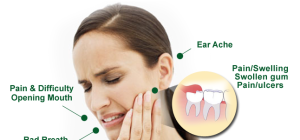 Many kinds of sleep disorders go undiagnosed or are simply ignored, probably because people think that these will eventually pass or are not medical conditions serious enough to warrant a proper consultation.
Many kinds of sleep disorders go undiagnosed or are simply ignored, probably because people think that these will eventually pass or are not medical conditions serious enough to warrant a proper consultation.
Sleep disorders are in fact serious conditions that can be very dangerous when left undiagnosed and untreated. Insomnia, for instance, is one of the most common sleep disorders in the world. People who have trouble sleeping at night can experience drowsiness during the day, which can lead to accidents. In the United States, nearly 1,600 road deaths and 40,000 auto accident injuries reported every year are attributed to drowsy driving.
Fortunately, sleep disorders, especially the three most common ones, can be treated. Here’s a closer look at these sleep disorders and how they are treated.
Insomnia
People who have insomnia find it difficult to fall asleep and stay asleep. Insomnia can be transient, which means it occurs as a result of environmental changes, a stressful event, jet lag or another singular occurrence that can leave a person unable to relax and sleep soundly.
It can also be a chronic condition, in which a person has difficulty getting to sleep and maintaining sleep for at least three nights a week for four weeks or more. Chronic insomnia may stem from poor sleep habits, medications and medical conditions such as arthritis, back pain, asthma and depression. Some people also experience chronic intermittent insomnia when they get a few nights of good, interrupted sleep, after which they have several nights of restless sleep.
The method for treating insomnia would depend on the underlying cause. People who suffer from insomnia are recommended to see a doctor who specializes in sleep medicine. Sleep specialists will have patients undergo a sleep study so they can be properly assessed and provided treatment.
According to the National Sleep Foundation, there are three major types of treatments for insomnia: medical treatments (over-the-counter and prescription medications), alternative medicine and non-medical treatments.
Non-medical treatments involve psychological and behavioral techniques such as:
- Relaxation training, where the patient is taught how to systematically tense and relax the muscles in different parts of the body to induce sleep. Relaxation techniques such as mindfulness, breathing exercises, guided imagery and meditation techniques also help in calming the body.
- Cognitive behavioral therapy, which brings together positive thinking and behavioral changes such as having a regular sleep schedule to improve the quality of sleep.
- Stimulus control, which aims to develop an association between sleep and the bedroom by setting limits on the things you are allowed to do in the bedroom. For example, you can only go to bed when you are sleepy. Then, if you’ve been awake for at least 20 minutes, you should get out of bed.
Obstructive Sleep Apnea
Individuals who are diagnosed with obstructive sleep apnea (OSA) experience blocked airways during sleep, causing them to stop or have very shallow breathing before being able to breathe normally again. Apnea is the condition in which the muscles in the upper airway relax and obstruct the airway, interrupting breathing. This can last for more than 60 seconds – that’s a more than minute without air going into your body.
People with sleep apnea usually snore loudly, make gasping or choking noises and wake up as a result of oxygen deprivation. Because they rarely get uninterrupted sleep, people with OSA lack energy and feel extremely lethargic during the day. Morning headaches, dry mouth and frequent trips to the bathroom at night are also a common occurrence among apnea sufferers.
Treatments for sleep apnea include the following:
- Continuous positive airway pressure (CPAP) therapy
- Sleeping on the side / positional therapy
- Wearing of oral appliances
- Weight management program
- Surgery
Restless Legs Syndrome
Do you experience an uncontrollable urge to move your legs when you are sitting or lying down? You may have restless legs syndrome (RLS). Those with this condition may also feel an unpleasant burning, aching or crawling sensation in their legs, which may be alleviated by moving, walking or stretching. Periodic limb movements can also occur during sleep.
If you are diagnosed to have RLS, your primary care physician or sleep specialist will come up with a comprehensive treatment plan. This may involve medications, behavioral therapy and lifestyle changes such as cutting down on caffeine and having a relaxing massage at bedtime.
If you suffer from any or a combination of these sleep disorders, know that it’s never too late to seek help. Talk to your doctor about diagnosis and treatment options so you can finally get the quality sleep you need.







